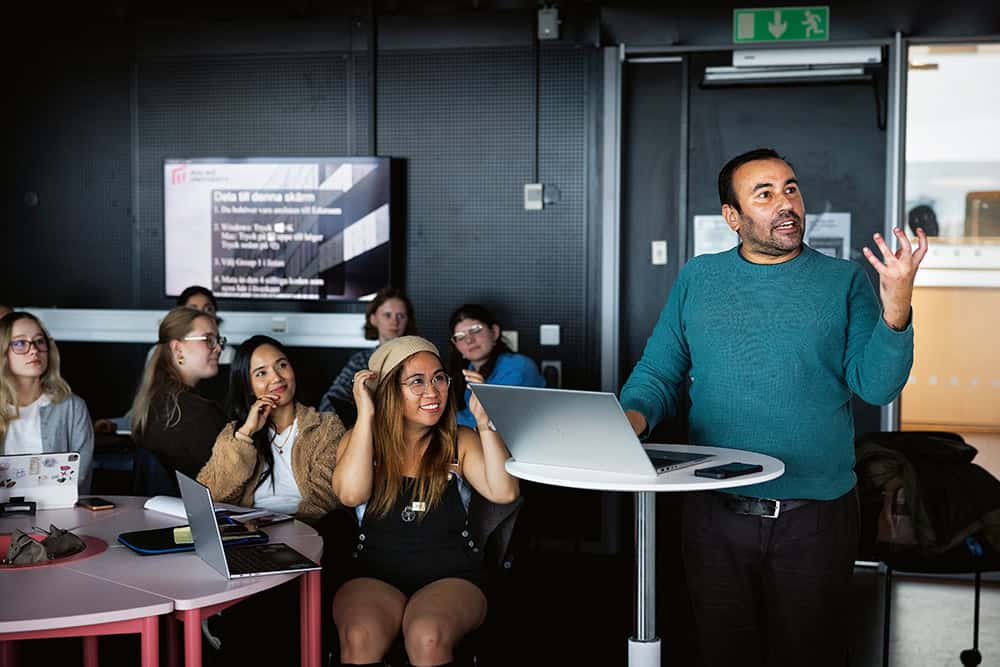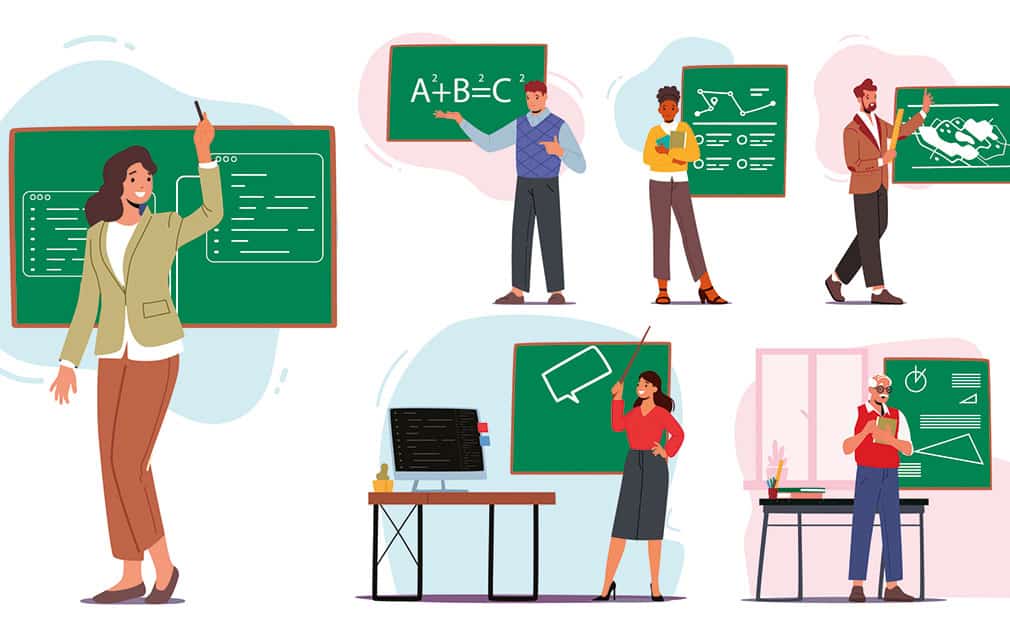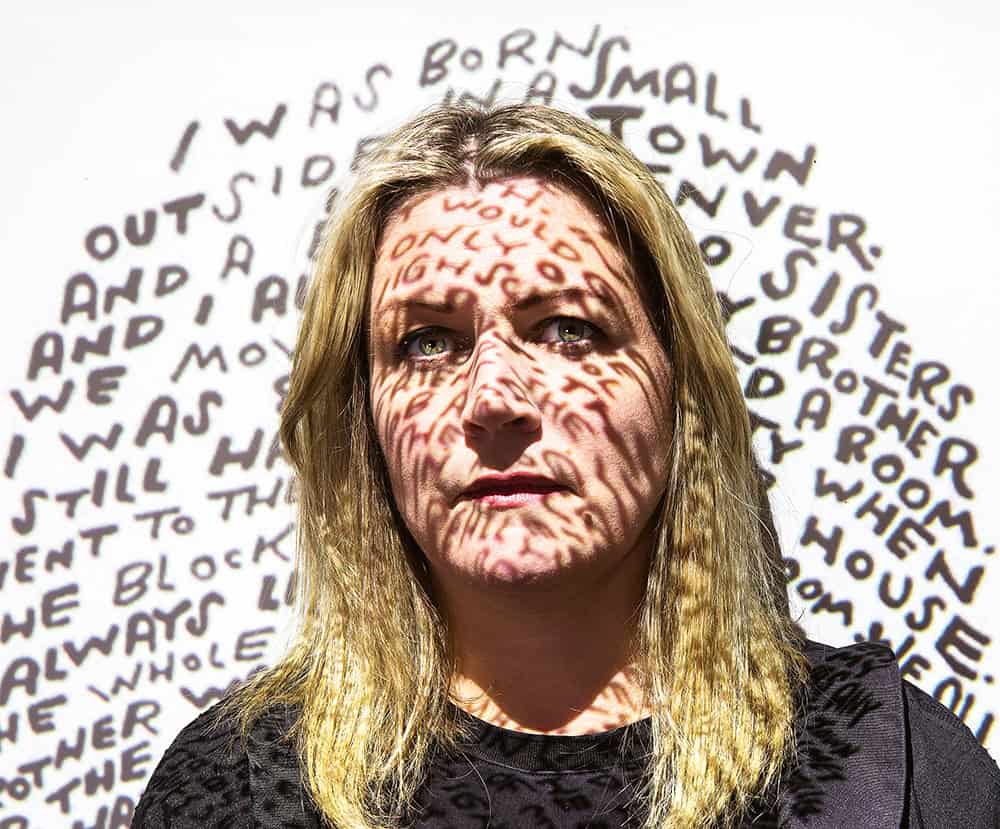Walking in someone else’s shoes. We have all heard that expression. It captures several aspects of what empathy is.
We usually talk about three different types of empathy: cognitive, which is about looking from someone else’s perspective; emotional, which is about feeling what someone feels; and compassionate, which is understanding what someone needs and wanting to give it to them.
This is what Lasse Lychnell, a Doctor of Business Administration, teaches. He wants students at the Stockholm School of Economics to learn all three types, but above all to feel.
“I think that we need to have goodness and humanity everywhere. Otherwise, we could easily create a world that is not pleasant to live in. But empathy is also an essential skill for our students. Many of them will become leaders, they will work with people.”

Lasse Lychnell
Doctor of Business Administration at the Stockholm School of Economics
Lychnell’s realisation of the importance of empathy began during a difficult period in his life. In his final year as a PhD student, he worked around the clock on his thesis, which was about IT-related business development. He doesn’t remember much about how he was actually feeling during that year.
After completing his doctorate, he pulled the emergency brake. Meditation and experimenting with different ways of increasing contact with himself also led to greater empathy. Both for Lasse Lychnell himself and for his fellow human beings. This personal development coincided with a new orientation at the Stockholm School of Economics: graduates should be empathetic, culturally sensitive, reflective and self-aware.
Together with a colleague, Emma Stenström, Lychnell put together a course that was first offered in 2017. One exercise he has often used involves dividing students into pairs. They take turns to share a powerful experience while the other is an active listener. No humming, no advice, no interruptions. Just listening.
“I start by creating a safe environment in the classroom. Then it is the students who do the work. There is usually a special atmosphere. You feel seen; you become part of something bigger. Perhaps you also acquire a different attitude when you have allowed yourself to listen.”
The teaching is based on his own experience of being in what he calls “a holding context” and sharing personal events or challenges with others. Listening is the key. As a listener, you spontaneously want to participate, to respond. Refraining from doing that gives you the space to let the other person in, to find contact with empathy.
“I keep the theory aspect simple,” he says. “The important thing is to create conditions for the experience of feeling empathy. Concepts can provide support, but if you start thinking too much, your blood – figuratively speaking – goes to your brain instead of your heart. This is about feeling.”
A more common way of working with empathy is through literary fiction. There is a lot of research on fiction as a tool, but not much consensus on the question of whether reading actually increases empathy, explains Anja Rydén Gramner, a researcher in education at Linköping University.
“Novels can help you to learn about yourself as a person and about your relationship with emotions. Reading helps you to understand other people’s perspectives better and to develop your capacity for reflection. We don’t know whether it works in all situations, but these are the reasons why we like to use it.”

Anja Rydén Gramner
Researcher in education at Linköping University
In her thesis Cold Heart Warm Heart: on fiction, interaction, and emotion in medical interaction (2022), she explored what happens in the classroom when medical students use fiction for professional development. What she found was that you cannot just throw a book into a group and then have a discussion.
“Empathy is an important professional skill, and literary fiction provides an opportunity to develop it. But there are many aspects that influence whether it will be successful. Whether a constructive dialogue takes place depends on the group, the student and the tutor.”
She is continuing her research in a new project that she hopes to complement by looking at other programmes where fiction is used, for example at the Stockholm School of Economics, police training, social work and law.
“When reading fiction is not regulated, it may be more difficult to find its use than in medical programmes. But we know it exists”
The police training programme in Stockholm has used literary reporting, such as ‘The Laser Man’ and ”No Tears for Queers”. How does it feel to be hunted because you do not look Swedish, or to be gay and the victim of a hate crime?
“The aim is to increase empathy, and that is very important. But I must throw in a caveat: fiction is not a quick fix. There needs to be awareness in how it is used. That is why classroom research is important, to identify best practice.”
Could something called ’empathic dialogue’ provide some input in the meantime? Hilmar Thór Hilmarsson teaches empathic dialogue to psychologists and psychotherapists at Mid Sweden University in Östersund, and he has written a number of books on the subject.
His students get to practice empathy in role-plays. One student is a reluctant patient, while another is a psychologist. The conversation is recorded, and the students are given feedback on the recording.
“The aim is to make people aware of their conversational behaviour and for them to be able to describe their choices based on the available research: ‘Here I chose to validate, because the patient needed reassurance’ or ‘Here I chose active listening and here a question’.”

Hilmar Thór Hilmarsson
Teaches empathic dialogue to psychologists and psychotherapists at Mid Sweden University in Östersund
Everyone can develop their empathy, he believes. When difficulties or conflicts occur in everyday conversations, opportunities to practice empathy also arise.
“We can choose empathy by asking good questions and listening affirmatively and supportively. Then we can move on to questions that build cooperation, like ‘Can we do this?’.”
In his role as a university teacher, Hilmarsson uses empathy to counteract the stress that can affect students when they feel that they cannot keep up, for example. “Stress can help to create a critical and prickly attitude. How can we help? By understanding, listening and responding with kindness. That is how we can create a good atmosphere and have good discussions in the classroom.”
How you can teach empathy
- Start with the why – why is empathy important in your particular subject?
- Explore your own capacity for empathy to better inspire others.
- Keep the theory part simple. Focus on creating experiences where students can empathise.
- Create a safe space. Set a framework where participants can meet experiences with an open mind.
- Invite exploration – empathy cannot be forced.
- Read books on dialogue and interaction.
- Think through your more difficult dialogues – have a plan.
- When using literature, (short stories, novels, poems), use them whole rather than just extracts.
- Have a dialogue facilitator who is well prepared, has read the literature, is engaged and is a good teacher.
Source: The interviewees in the article

















